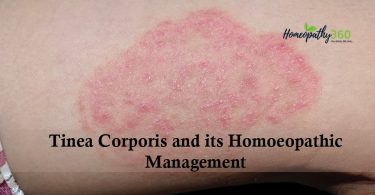
“Cantharis Vesicatoria’s Dual Approach to First and Second-Degree Burns: Healing Burns with Speed and Precision”
Abstract:
This article explores the use of Cantharis vesicatoria, a homeopathic remedy made from the Spanish fly or blister beetle, in a dual approach to the treatment of first- and second-degree burns. This strategy is based on the idea that “similia similibus curentur” (like cures like), where a substance that causes comparable symptoms is used to alleviate those symptoms. Cantharis vesicatoria is a well-known agent that can cause blistering and burning, making it an excellent treatment for burns.
The Doctrine of signature, which holds that nature demonstrates when to utilize therapeutic remedies, is discussed in this article. Cantharis vesicatoria is more effective in this situation since its blistering and burning characteristics match the signs and symptoms of burns.
According to Dr. Hahnemann’s perspective on local disorders, dynamic changes in the body have an impact on the entire organism and need to take into account all symptoms. For efficient treatment, this strategy promotes both internal and exterior applications.
The article’s recommendation for a thorough approach to burn care includes the use of Cantharis vesicatoria, a truly homeopathic medicine, both internally and externally. This two-pronged strategy can reduce burn-related discomfort and hasten the healing process.
Introduction
The medical practice of homeopathy is based on the principle of similia similibus curentur’. ‘Like cures like,’ is what it means. Hahnemann explains the highest ideal of healing in an aphorism 2. The greatest objective of treatment is the swift, gentle, and permanent restoration of health or the complete removal and eradication of the disease in its entirety using the safest, most straightforward methods possible.
BURNS Burns and scalds are often treated by local treatments. Burns are injuries to the skin or deeper tissues brought on by hot objects, fire, electricity, chemicals, or sunlight. The amount and depth of the burns determine how severe they are. The first degree is the lowest, while the third degree is the highest. 1. First-degree burns: red skin without blisters 2. Burns of the second degree: blisters and considerable skin thickening 3. Third-degree burn :it is broad and extensive and has a leathery white appearance.
Burns have a variety of causes. 1. Burning from hot, flammable substances.
2.Burns from chemicals
3. Electrical fires 4. Fires, including those caused by candles, lighters, and matches 5. Too much sun exposure
The cause of the burn has no bearing on the type of burn. Scalding, for instance, can result in all three burns, depending on how hot the liquid is and how long it is in contact with it.
Cantharis vesicatoria Cantharis vesicatoria is a homeopathic medicine obtained from the insect Lytta vesicatoria, commonly known as the Spanish fly or blister beetle. This beetle lives on honey suckle and olive trees in western Asia and southern Europe. It belongs to the Cantharidae family. The most important symptom of this medicine is burning and blister formation. It produces a strong poison that causes blistering. Since homeopathy is based on the law of similars, a doctrine states to treat a symptom with a diluted remedy that produces the same symptoms. Spanish fly blisters are formed, and they cause burning and smarting.
DOCTRINE OF SIGNATURE The terms “sign of nature” and “signature” are claimed to have been combined to form the word “signature,” which is a duplet. A belief that is recognized as authoritative by a specific group or school of thought is known as a doctrine. The “doctrine of signature” is a belief in diverse natural signs. The first to promote the doctrine of signature was Paracelsus. His theory was that the use of medicinal remedies against diseases was always indicated by nature through some kind of sign. Prior to Hahnemann, the development of materia medica was mostly based on theoretical ideas, with the Doctrine of Signature serving as a significant source of material. The major symptoms of this medication are blister development and burning. It creates a potent poison that burns the skin. Spanish fly blisters develop, causing burning and itching. This is the doctrine of signature.
THE OPINION OF DR. HAHNEMANN ON LOCAL DISEASES Dr. Hahnemann asserts that living things cannot have local diseases without any internal changes in body. The organism is a live, indivisible entity that functions and responds collectively. In the sense that the rest of the body does not take part in the dynamic change created by any method, any disturbance in the nature of dynamic change is never limited to any one part. Homoeopathic treatment involves considering all of the symptoms. Dr. Hahnemann provides information regarding local diseases in Aphorism 186. Local maladies or diseases are those so-called conditions that were only recently created by an exterior injury but nevertheless manifest at first glance. Later, though, he felt the effects of both internal medicine and external applications. In sections 196 to 203 of his ‘Organon of Medicine’ (5th edition), Hahnemann made reasons in favor of external application. In sections 284 and 285 of the sixth edition of the Organon of Medicine, he clearly explained the use of external applications. In addition to using the same therapy physically, he advised continuing it inside.
ANOTHER STALWART’S PERSPECTIVE ON BURN’S TREATMENT BY CANTHARIS Dr. H.C. Allen states in his keynote addresses that burns and scalds can be treated in following manner; if the skin is intact, apply an alcoholic solution of any potency , cover with cotton, and the burns will heal without developing blisters.
Use in boiled or distilled water , if the skin is broken and administer potency internally in each case .
In line with Phatak’s medical literature Skin scalds and burns Cold water ameliorates eruptions burn on touching.
J.H. Clarke’s materia medica Bruises and blisters First-degree burns and erysipelas blisters can be treated with a lotion that contains a few drops of tincture per ounce of water, with the dilution being administered internally. This is effective treatment for burns and scalds Warmth, rest, and rubbing ameliorate.
CONCLUSION
Internal or external, a substance known to be truly homeopathic may appear to hasten the cure because the medication’s action at the site of the local ailment may produce a quicker change. Thus, we give Cantharis in cases of burns, ameliorated by cold application internally as well as external application, and the cure will be rapid.
Bibliography
1.https://organonofmedicine.com/sixth-edition/ 2. https://homeopathybooks.in/keynotes-homeopathic-remedies/cantharis-2/ 3. http://www.homeoint.org/clarke/c/canth.htm 4. https://homeopathybooks.in/concise-materia-medica-by-s-r-phatak/cantharis-19/
About the Author:
Dr. Deepa Patel
M.D. Scholar
Government homoeopathic medical College and hospital Bhopal (MP )
HOD-Dr. Chetna Pandey
Guide -Dr. Nivedita Agrawal





